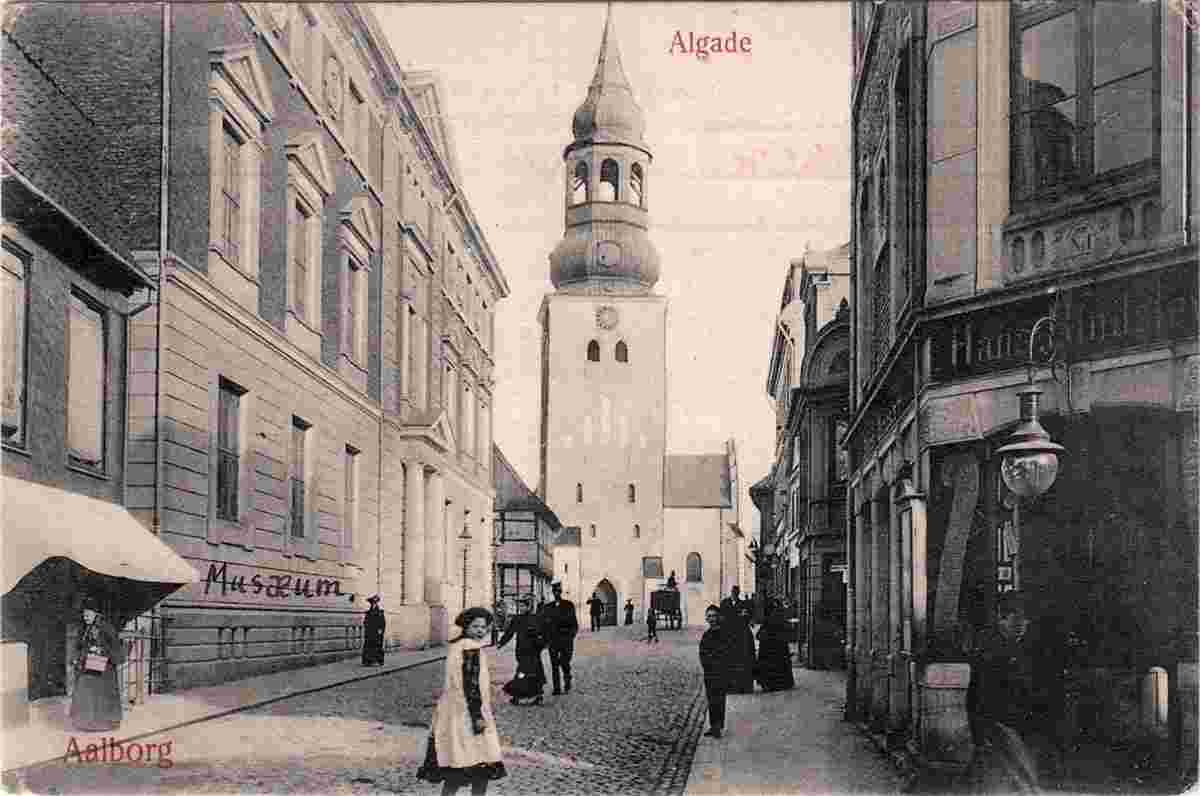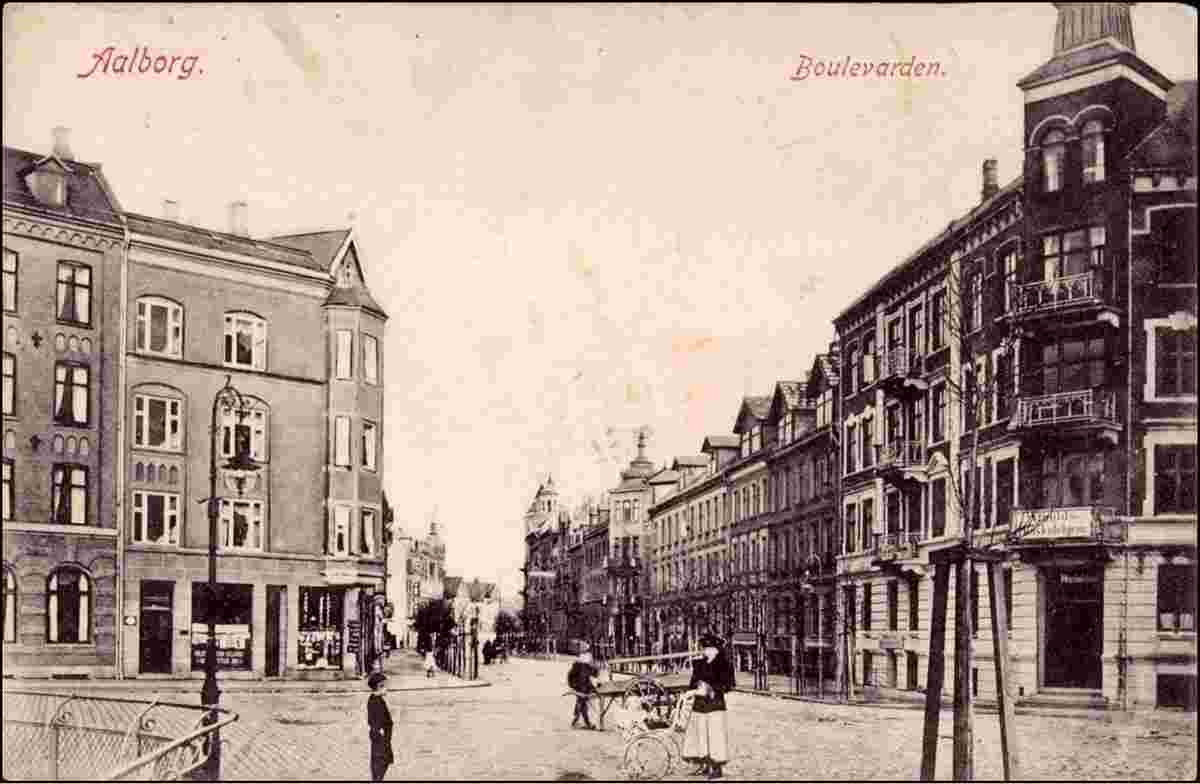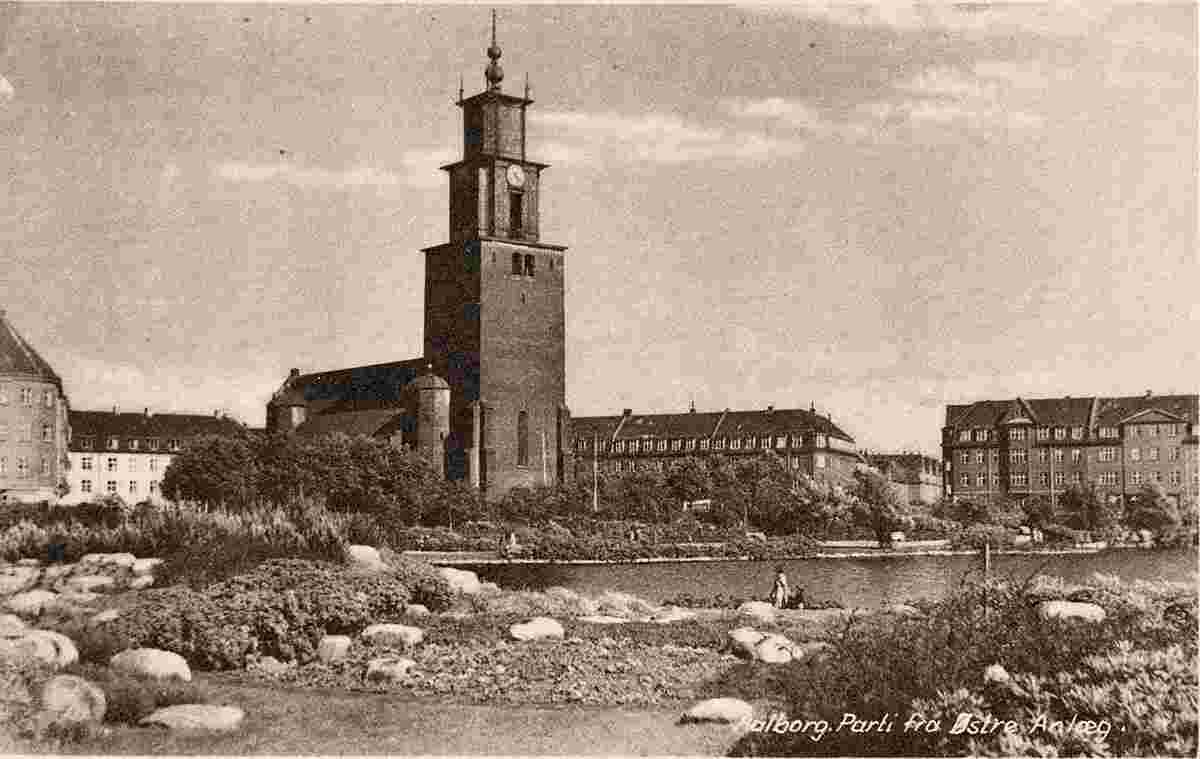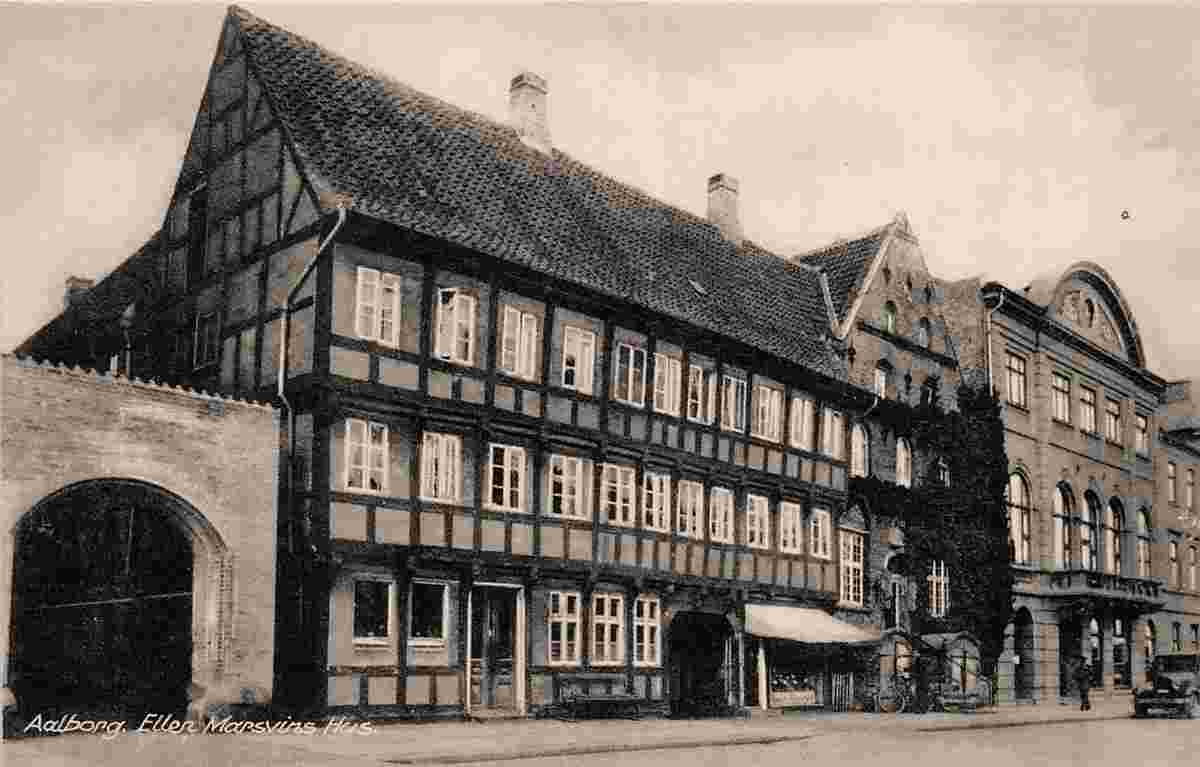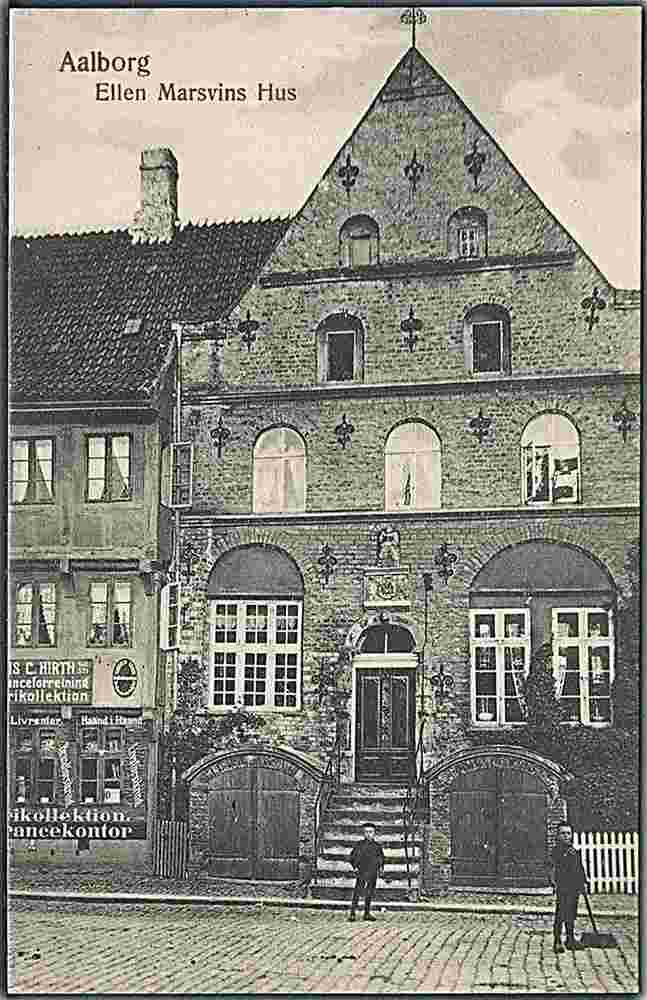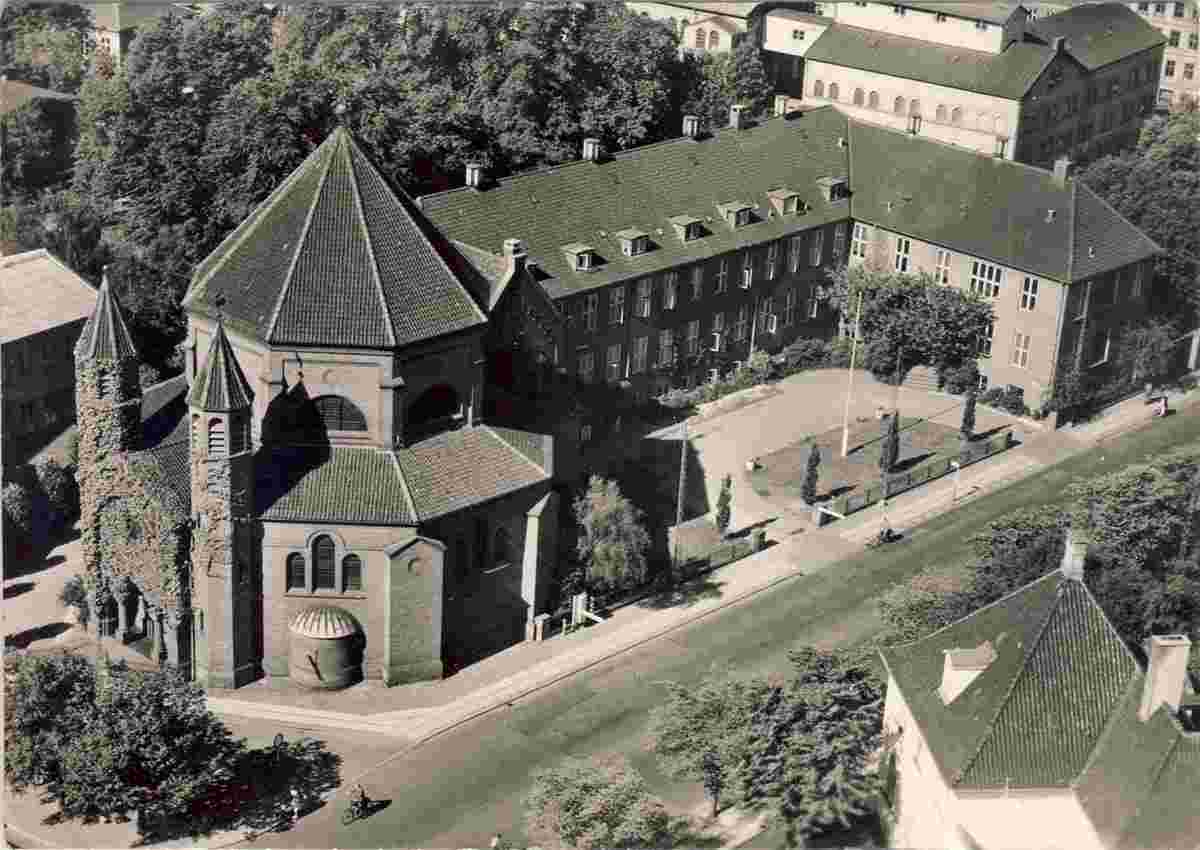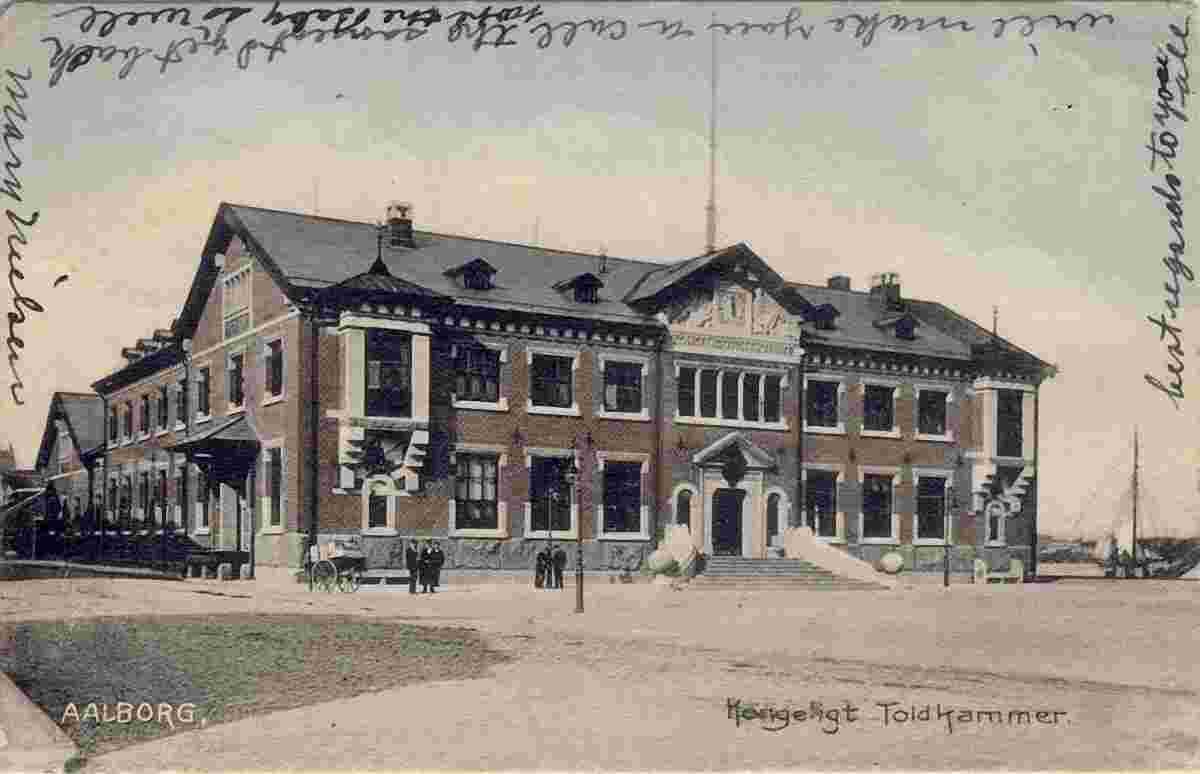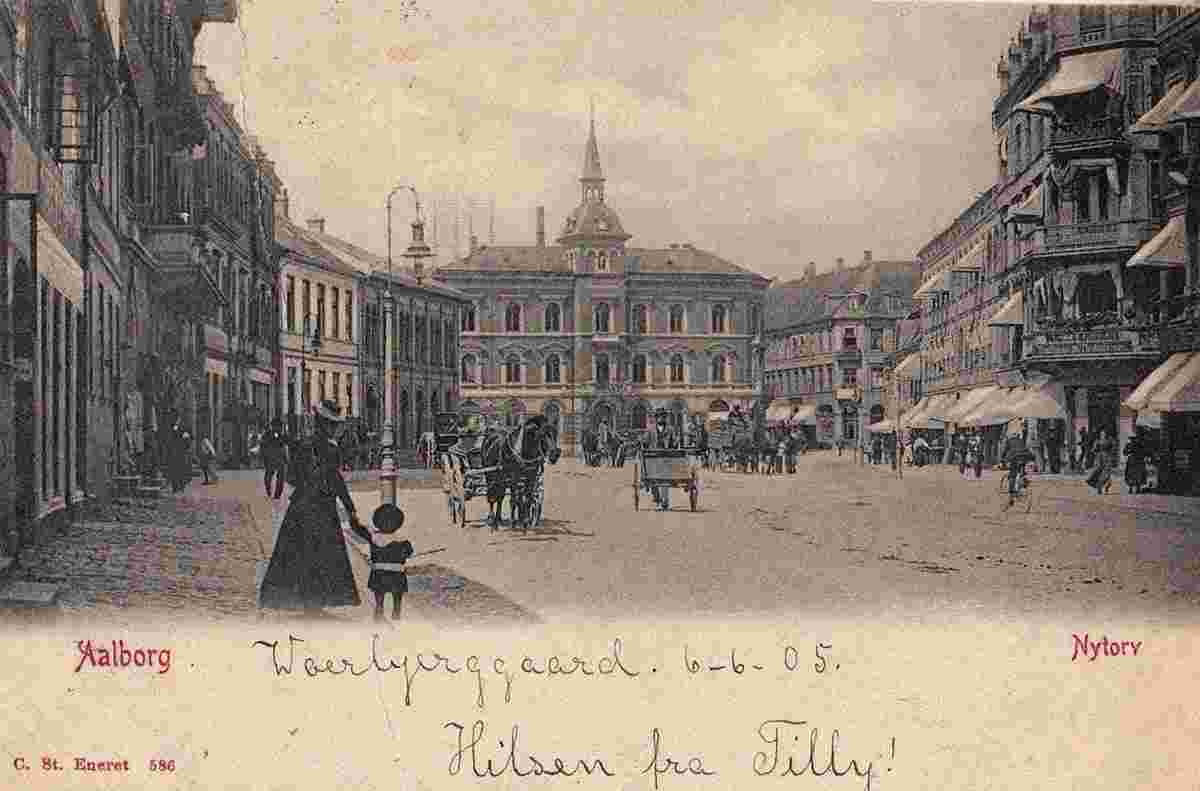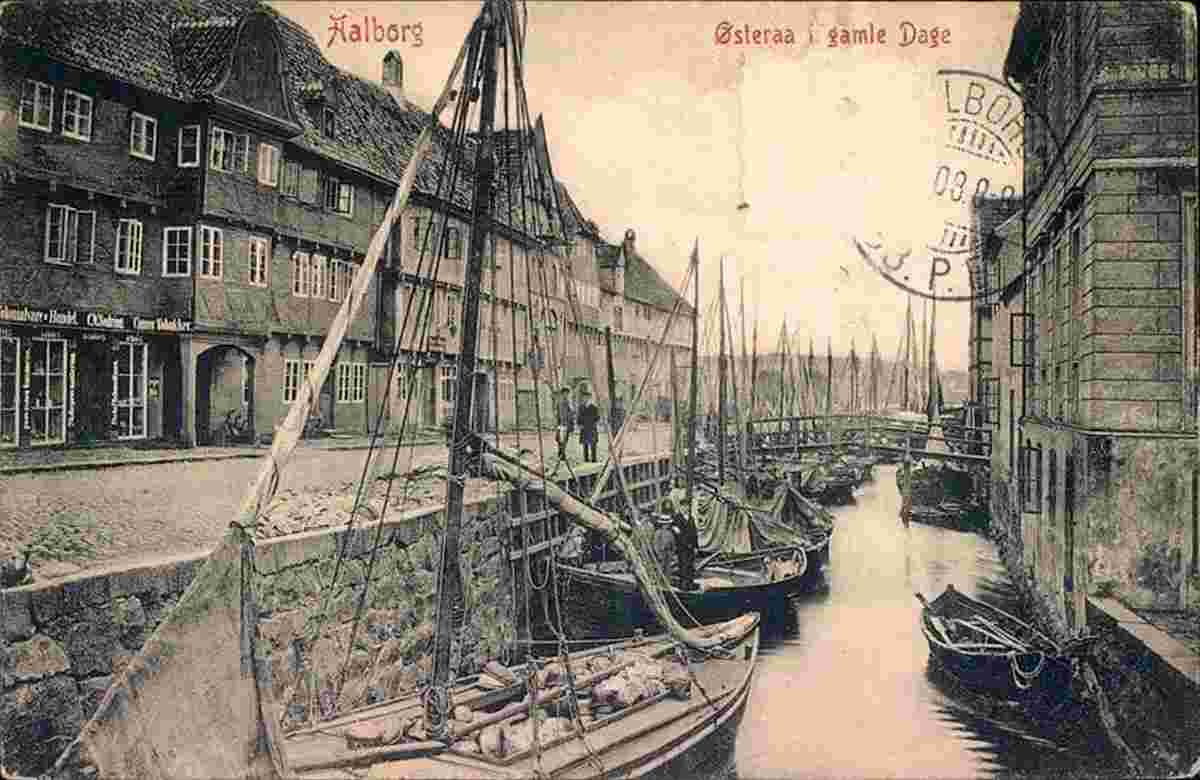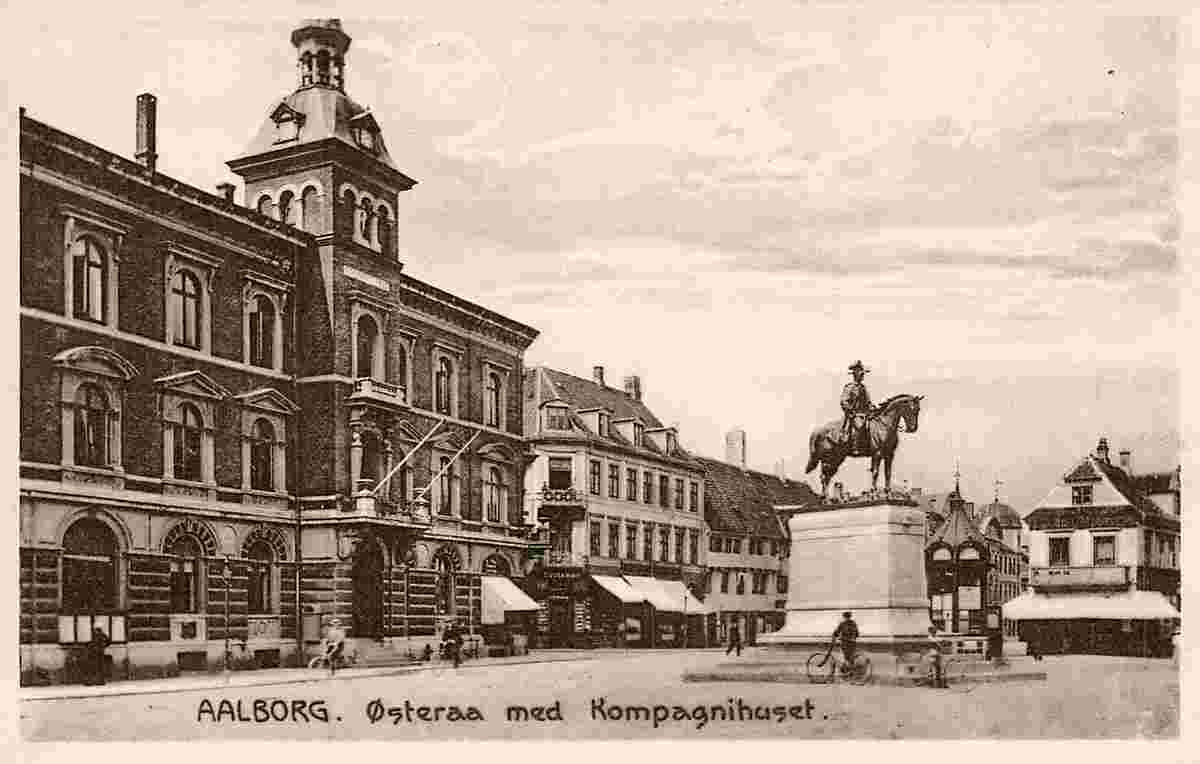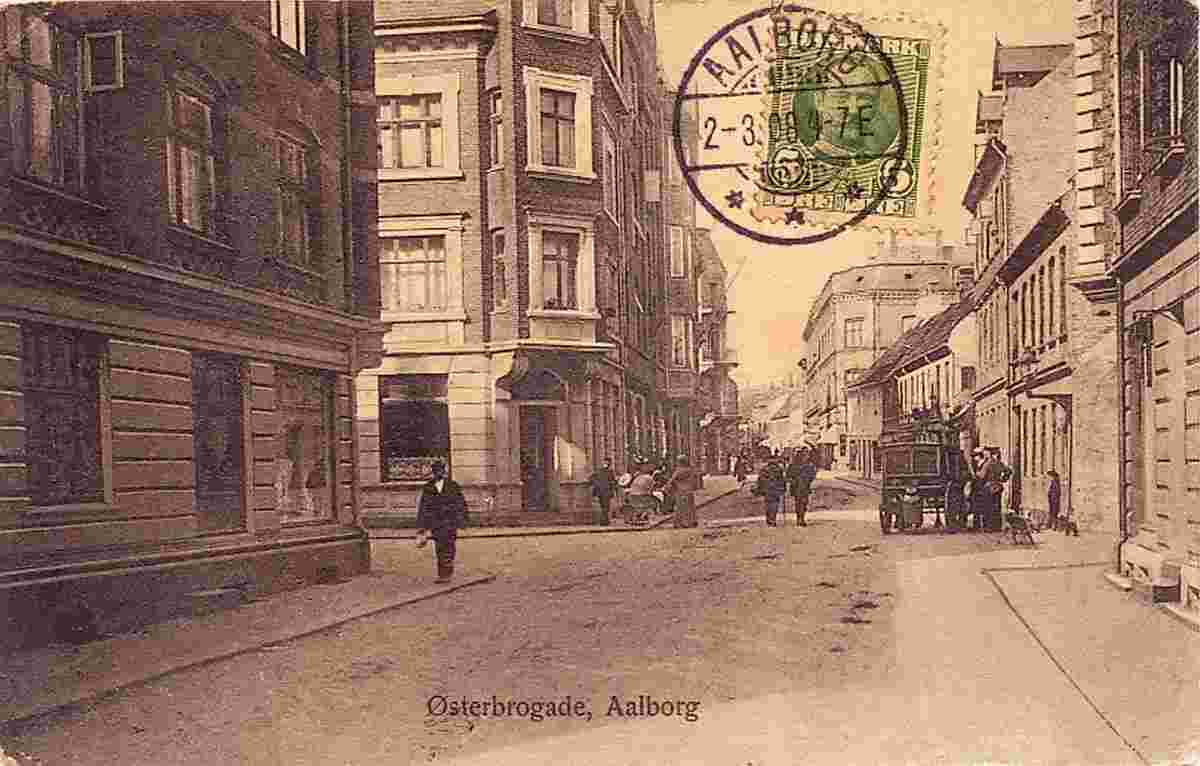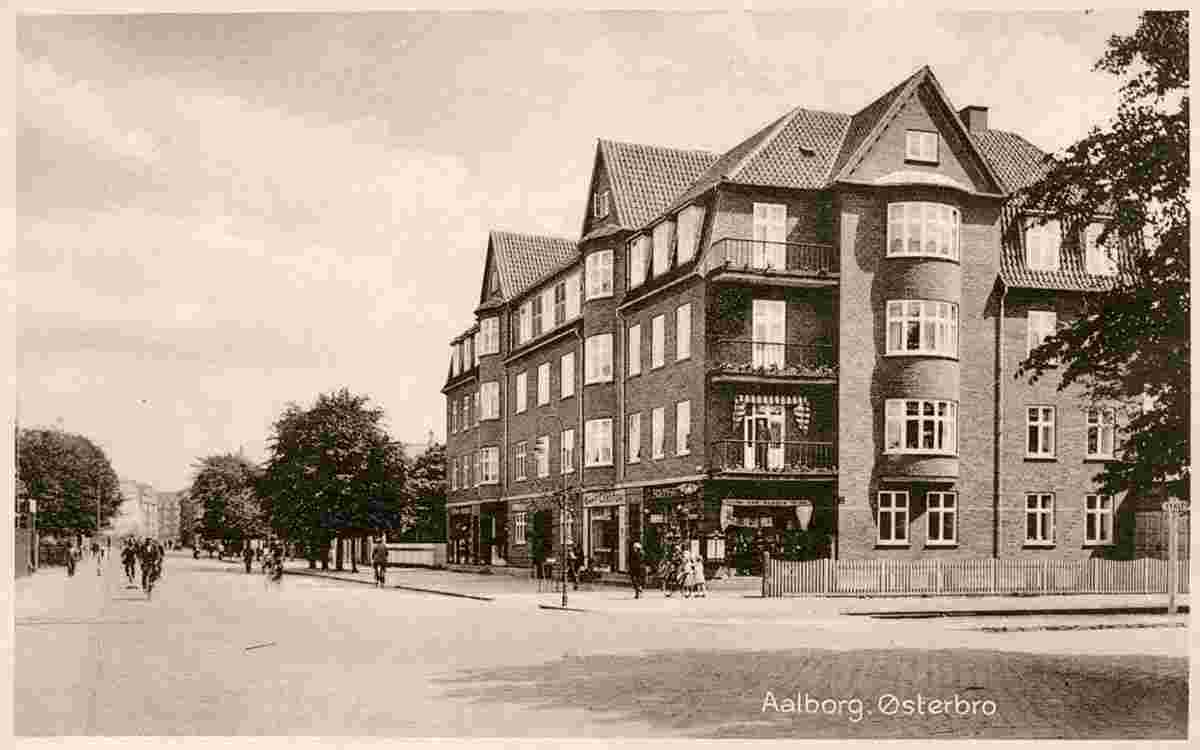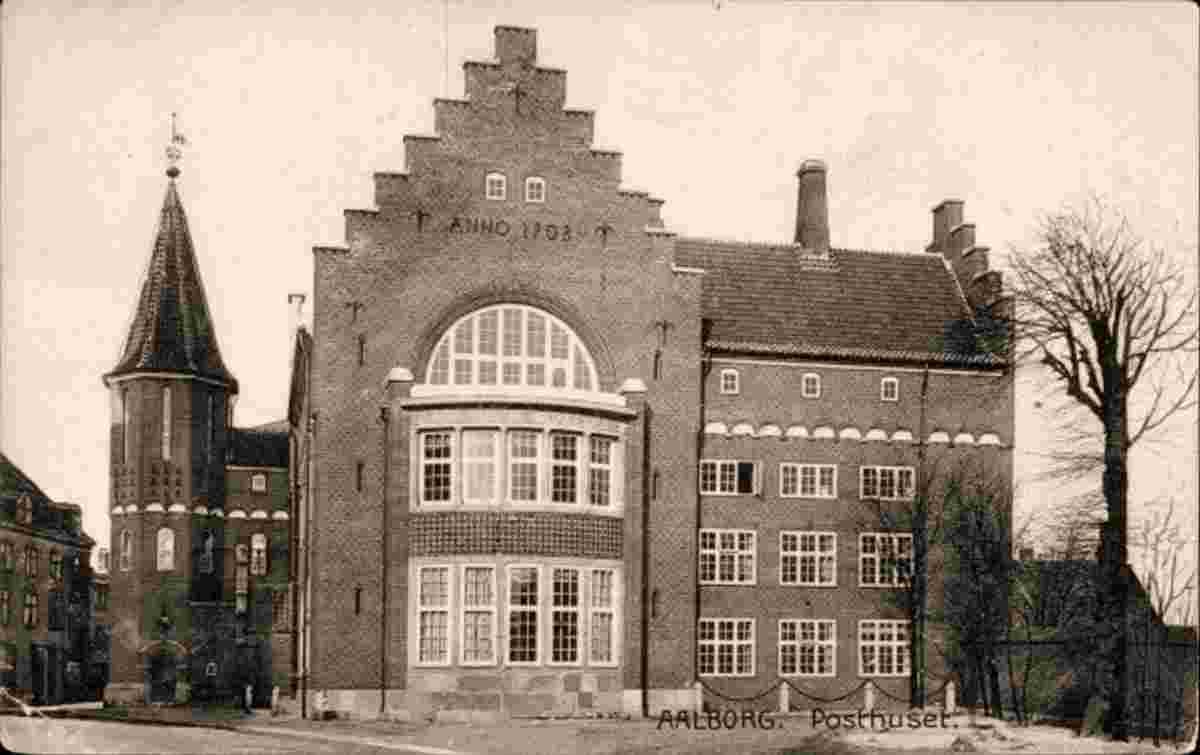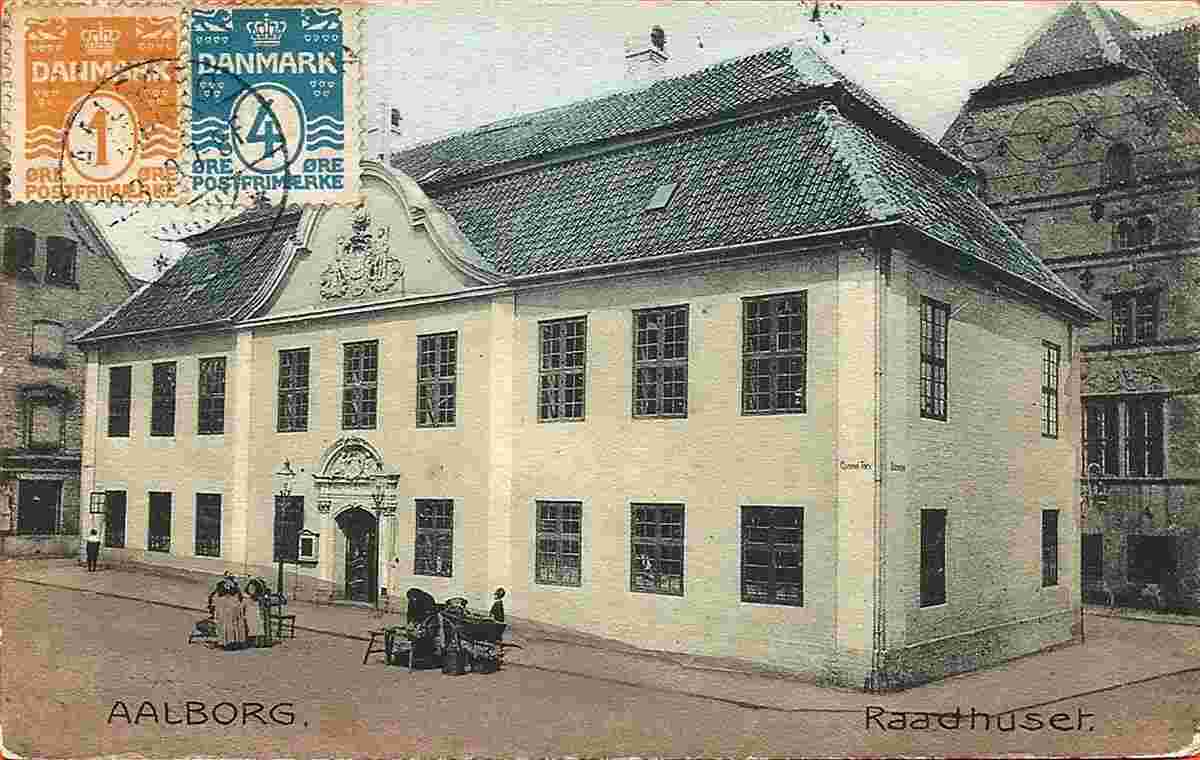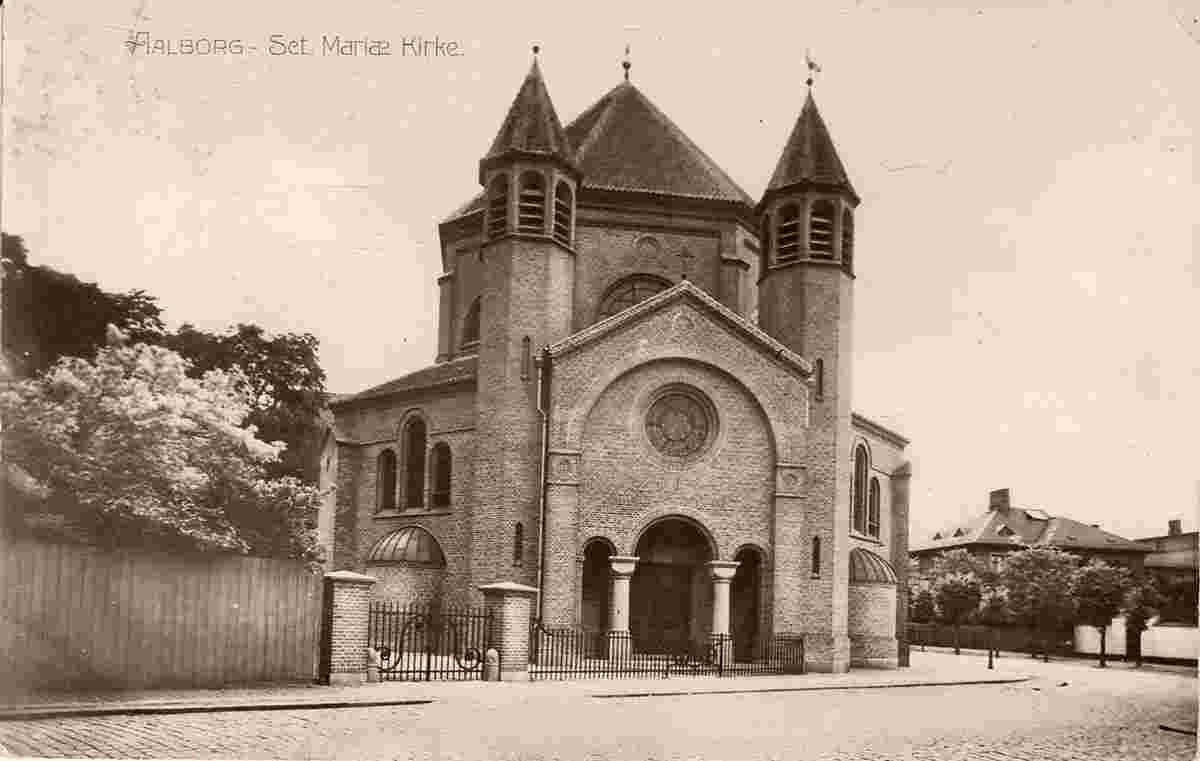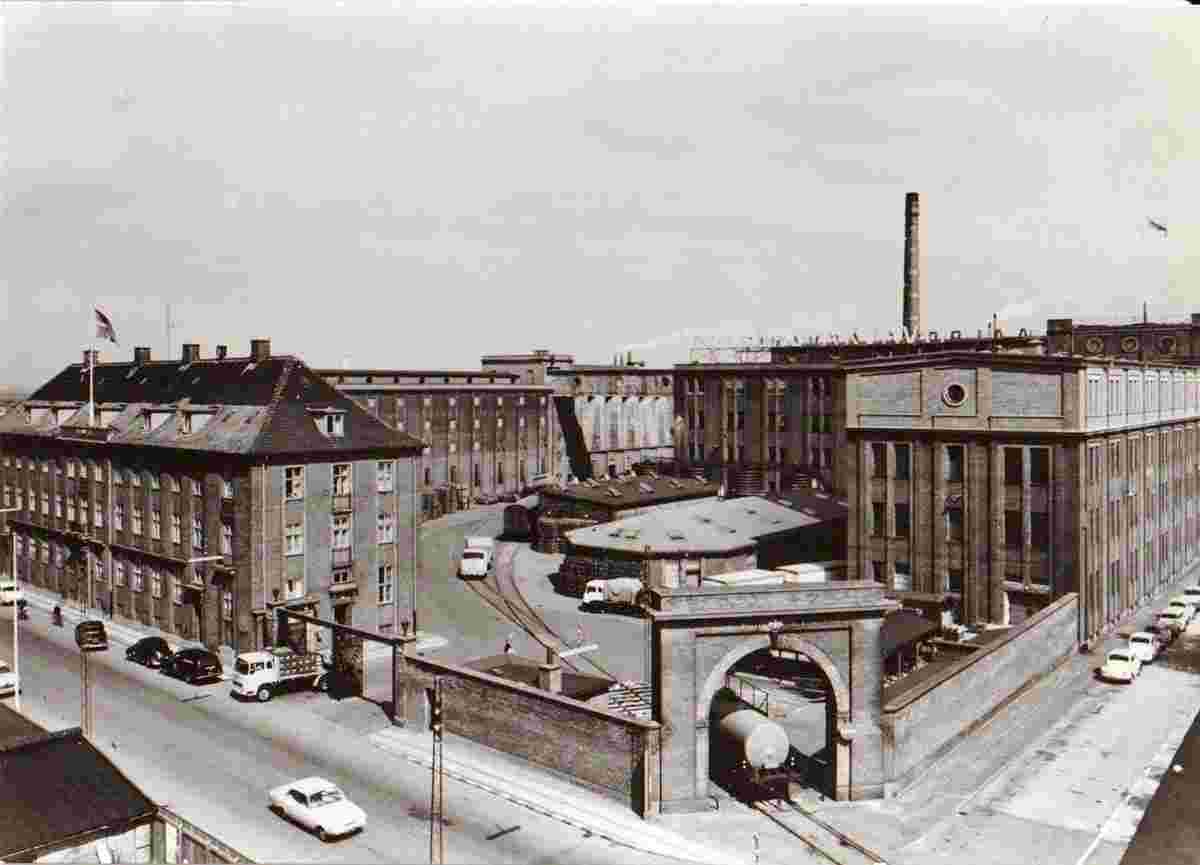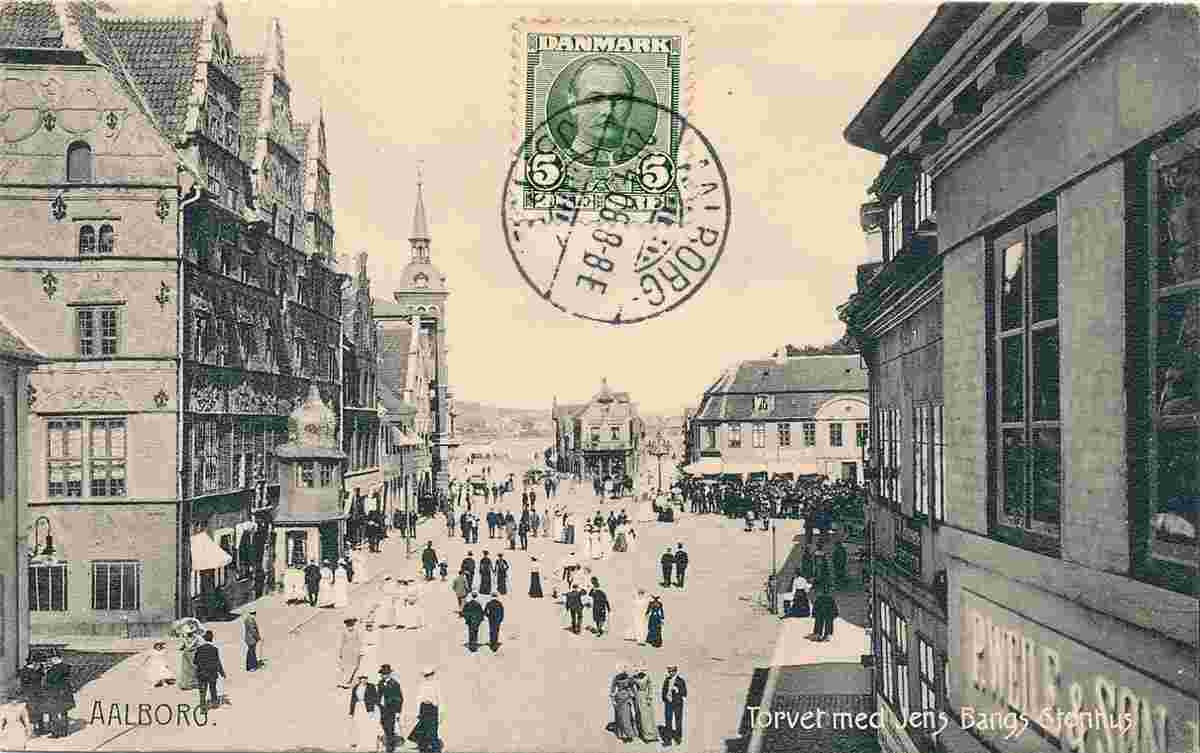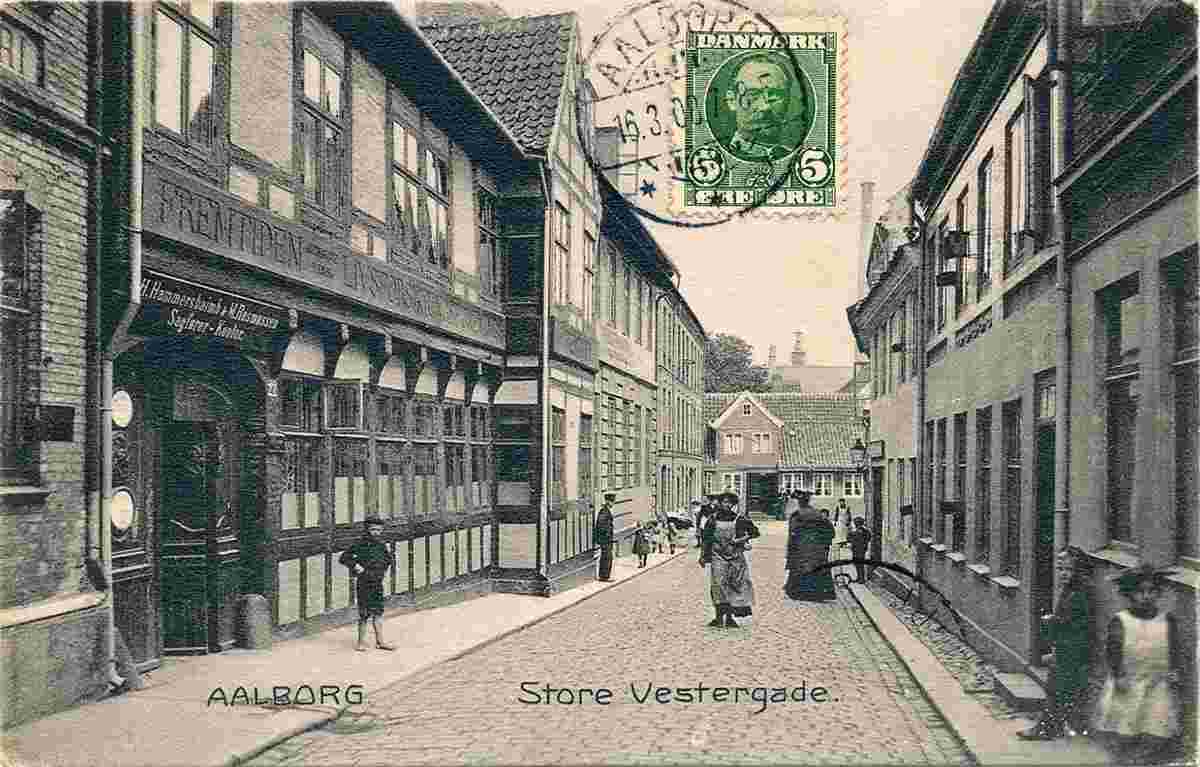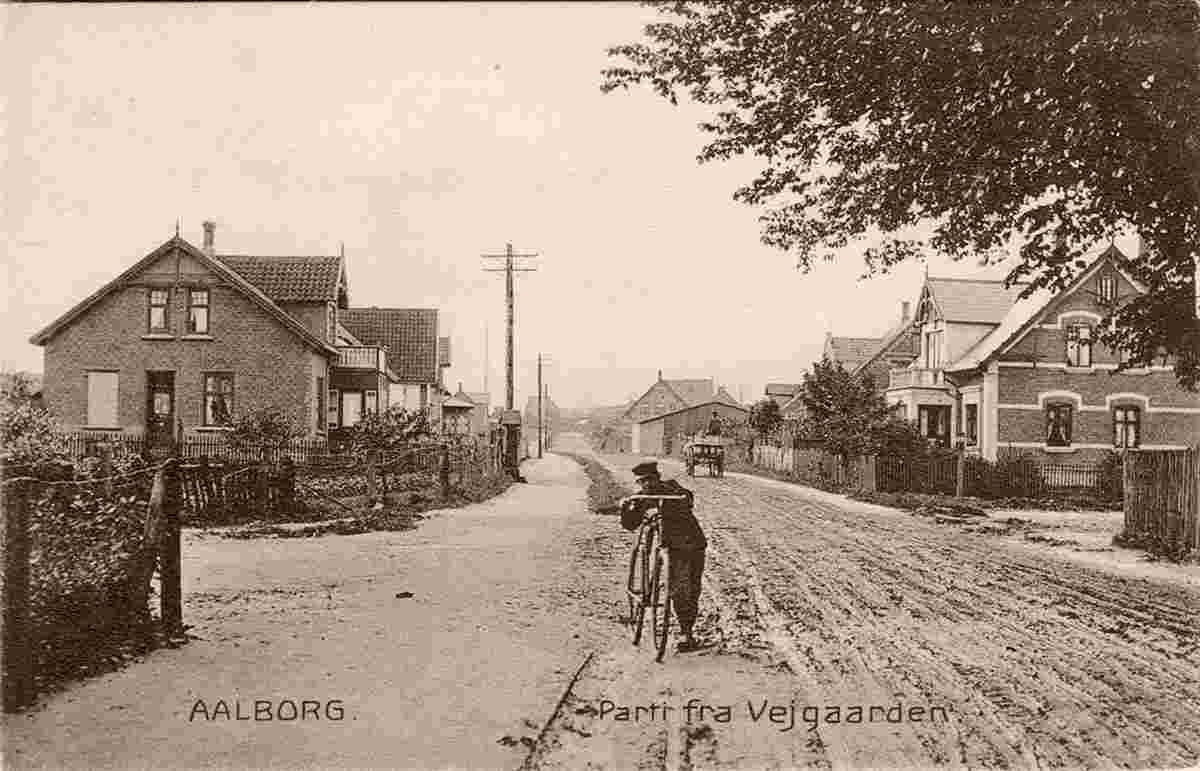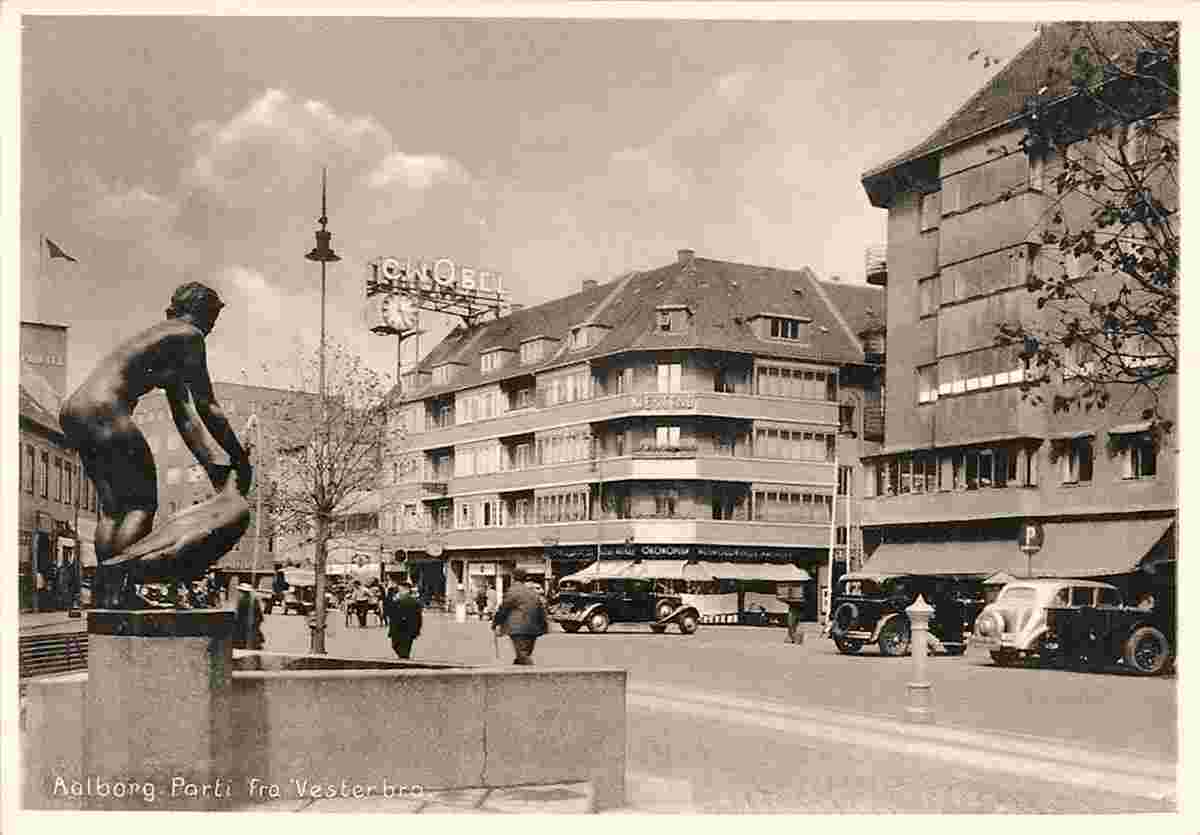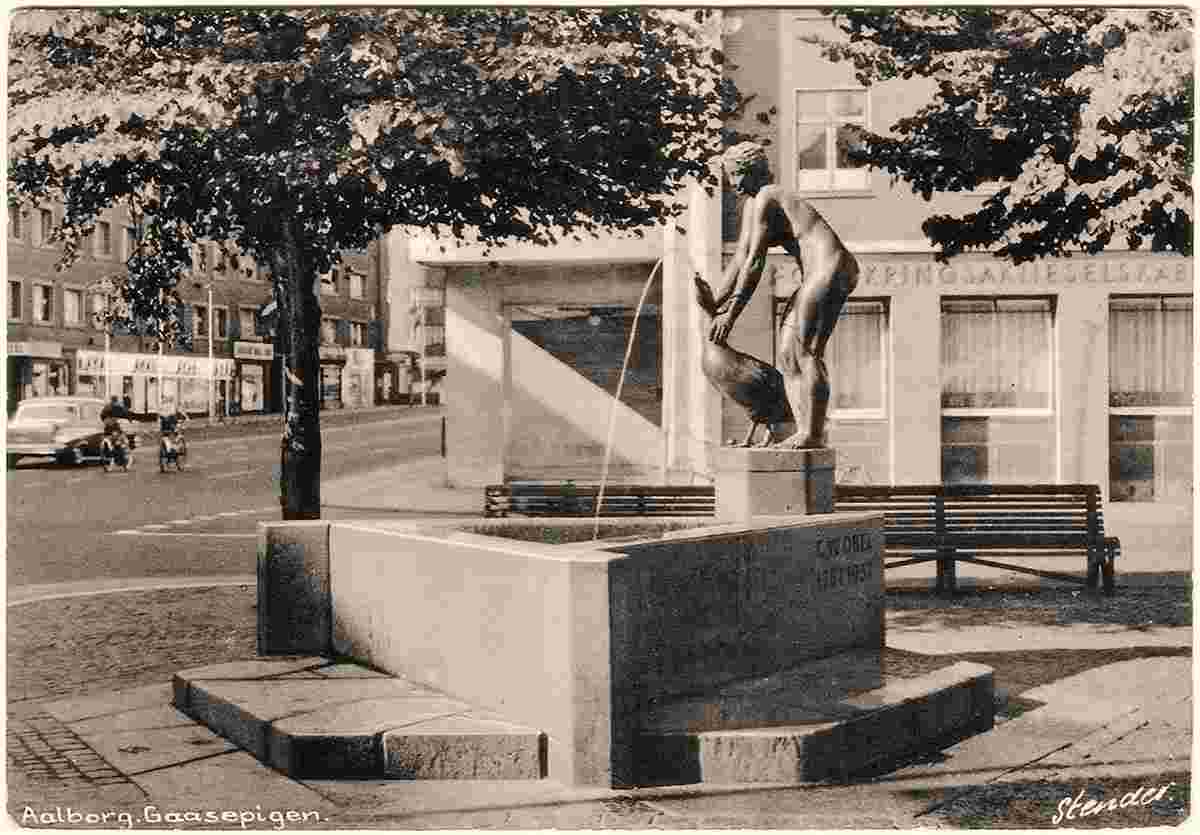Historical and old photos of Aalborg, North Denmark
HistoryThe area around the narrowest point on the Limfjord attracted settlements as far back as the Iron Age leading to a thriving Viking community until around the year 1000 in what has now become Aalborg. In the Middle Ages, royal trading privileges, a natural harbour and a thriving herring fishing industry contributed to the town's growth. Despite the difficulties it experienced over the centuries, the city began to prosper once again towards the end of the 19th century when a bridge was built over Limfjord and the railway arrived. Aalborg's initial growth relied on heavy industry but its current development focuses on culture and education. BeginningsAalborg traces its history back over a thousand years. It was originally settled as a trading post because of its position on the Limfjord. The sites of what were two settlements and a burial ground can be seen on Lindholm Høje, a hill overlooking the city. These large settlements, one from the 6th-century Germanic Iron Age, the other from the Viking Age in the 9th to 11th centuries, evolved at the narrowest point on Limfjord as a result of the traffic between Himmerland to the south and Vendsyssel to the north. The first mention of Aalborg under its original name Alabu or Alabur is found on coins from c. 1040, the period when King Harthacnut (Hardeknud) settled in the area. In c. 1075, Adam of Bremen reported that Alaburg, as he called it in German, was an important harbour for ships sailing to Norway. In Valdemar's Danish Census Book from 1231 it was called Aleburgh, possibly meaning "the fort by the stream" as in Old Norse all meant a stream or current and bur or burgh a fort or a castle. The Church of Our Lady in Aalborg was originally built in the early 12th century but was demolished during the Reformation. Grey Friar Convent, on the east side of Østerå, was probably built around 1240; it was documented in 1268 when it was a Franciscan Convent of the Order of Friars Minor, but like many other Roman Catholic monasteries and convents was shut down in 1530 as a result of the Reformation. Middle AgesAalborg's earliest trading privileges date from 1342, when King Valdemar IV received the town as part of his huge dowry on marrying Helvig of Schleswig. The privileges were extended by Eric of Pomerania in 1430 and by Christopher of Bavaria in 1441. The town prospered, becoming one of the largest communities in Denmark. Its prosperity increased when the merchant- and trade association Guds Legems Laug was established in 1481, facilitating trade with the Hanseatic League, especially from 1516 when Christian II granted it a monopoly in salting Limfjord's herring. The king frequently visited the town, where he held court and stayed in the old Aalborghus. The herring fishery linked Aalborg to the East coast of England, across the North Sea, both in commercial competition and cultural exchange. During the Middle Ages a number of important institutions were established in Aalborg, including Budolfi Cathedral in the late 14th century and the Hospital of the Holy Ghost, a monastery and nunnery founded in 1451 to help those in need. It was converted into a hospital during the Reformation and is still in use today as a nursing home for the elderly. In 1530 a large part of the town was destroyed by fire, and in December 1534 it was stormed and plundered by the king's troops after a peasants' revolt known as the Count's Feud led by Skipper Clement. It resulted in the death of up to 2,000 people. The Reformation in 1536 brought about the demolition of the town's two monasteries. As a result of the Reformation, Aalborg became a Lutheran bishopric in 1554. 17th to 19th centuriesFrom the 1550s to the 1640s, as a result of increased foreign trade, Aalborg enjoyed great prosperity, second only to that of Copenhagen. The population grew in parallel with the development of many fine buildings in the city as merchants benefitted from their shipping routes from Norway to Portugal. In 1663, the city suffered yet another serious fire, which destroyed the tower of Budolfi Church. During the second half of the 18th century, Aalborg entered a further period of prosperity. In Erik Pontoppidan's Danske Atlas (Danish Atlas) it was described as "after Copenhagen, the best and most prosperous market town in Denmark". The population grew from 4,160 in 1769 to 5,579 in 1801. In 1767, the second newspaper ever published in Denmark appeared in the city. After Denmark ceded Norway to Sweden in 1814, Aalborg lost its important role as the country's centre for Norwegian trade. Its former prosperity also suffered as a result of difficulties with the herring industry as the fish disappeared after the sea breached the Agger Tange (which had linked Thy with the rest of Jutland at the western end of Limfjord) in the 1825 North Sea storm. The after effects of the state bankruptcy in 1813 also contributed to widespread poverty in the city. In the mid-19th-century, Aalborg was overtaken by Aarhus as the largest city in Jutland. Towards the end of the 19th century there was however an upturn. In 1865, the pontoon bridge over Limfjord was completed, and in 1869, the railway reached the city with a railway bridge over the sound to Vendsyssel three years later. The harbour facilities were also improved, making Aalborg Denmark's second port. Aalborg became the country's main producer of tobacco products and spirits, followed in the 1890s by fertilisers and cement. By 1901, the population had increased to almost 31,500. 20th century industrialisationAround the beginning of the 20th century, as a result of decisions taken by the municipality, many of the city's half-timbered houses were torn down. They were replaced by hundreds of modern buildings, completely changing the look of the city. Factories with smoking chimneys became ever more prevalent in the outskirts. Among the most important were De Danske Spritfabrikker (spirits and liquors), De forenede Textilfabrikker (textiles), the East Asiatic Company (trading), Dansk Eternit (building materials) and C.W. Obel's tobacco factory (established in 1787). Aalborg Portland run by F.L. Smidth was one of several cement factories operating in 1913, together employing some 800 workers. By the 1930s, Aalborg was being promoted as "Denmark's new centre for industry and workers". Replanning continued with additional thoroughfares cutting through the city. The port facilities were also improved with the help of a dredger and the opening of new docks. In 1933, Christian X inaugurated a new bridge over Limfjord to replace the fragile pontoon crossing. Aalborg Airport, officially opened in 1938 because of the success of the cement industry, had in fact operated flights to Copenhagen since 1936. During the German invasion of Denmark in 1940, the airport was captured by German paratroopers on the night of the 21 April as a base for German aircraft flying to Norway. On 13 August 1940, a dozen Bristol Blenheim bombers of No. 82 Squadron RAF were launched against the Luftwaffe airfield during one of the most disastrous Royal Air Force raids of the war. One turned back because of fuel problems, but all of the remaining 11 were shot down by enemy fighters and/or flak batteries within 20 minutes. After the war, the Royal Air Force destroyed all the German facilities including planes, hangars and equipment but left the passenger facilities intact. By 1960, Aalborg had become known as the "city of smoking chimneys", with half of the inhabitants working in industry or manufacturing. Ten years later, Aalborg's population had grown to around 97,000 inhabitants. Recent historyThe significance of Aalborg's industry began to decline in the 1970s, precipitating a fall in the city's population until about 1990, when it began to increase again. By the year 2000, the service and education sectors accounted for about 60 percent of the workforce, partly as a result of the founding of Aalborg University in 1974. Since 1970, Aalborg and the northern suburb of Nørresundby have become a major administrative centre, thanks in part to the offices of the Region Nordjylland established in the east of the city. In addition to large industrial companies including Aalborg Portland, the only cement-producing company in the country, and the building products company Eternit, many small and medium-sized enterprises have been established. The telecommunications and information technology sector has developed with the support of Aalborg University and the North Jutland knowledge park NOVI. The First European Conference on Sustainable Cities and Towns took place in Aalborg in 1994. It adopted the Aalborg Charter, which provides a framework for the delivery of local sustainable development and calls on local authorities to engage in Local Agenda 21 processes. The Fourth European Sustainable Cities and Towns Conference, held in Aalborg in 2004, adopted the more binding Aalborg Commitments on local sustainable development. The commitments have now been signed by 650 local authorities while over 2,500 have signed the earlier Aalborg Charter. Origin: en.wikipedia.org | |||||||||||||
| Robinson Rd, CB 13862 Nassau, NP, The Bahamas |

